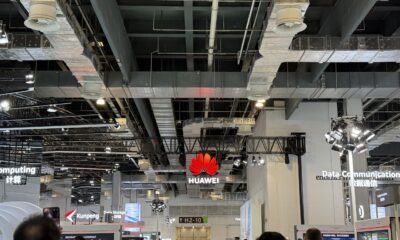Inovation
Efficiently Immersing into the Future: Sustainable Technology Solutions

In a groundbreaking European trial, it has been demonstrated how future networks can efficiently deliver immersive technologies while also saving energy. This trial showcases the potential for augmented reality (AR) and virtual reality (VR) services to expand beyond gaming and entertainment into various sectors such as education, healthcare, and manufacturing.
The demand for ultra-low latency, high bandwidth, and reliable connectivity for these immersive experiences poses a significant challenge for current communication networks designed primarily for smartphones and video streaming. However, recent work in Europe, led by the SEASON project, has shown promising results in meeting the requirements of immersive technologies.
The trial, conducted in L’Aquila, Italy, involved combining spatial passive optical networks (PONs), multicore fibers (MCFs), open radio access networks (O-RAN), and edge computing to deliver immersive services with high quality and up to 11% energy savings through intelligent resource orchestration. This achievement has implications not only for AR/VR applications but also for the future of 5G, 6G, and sustainable digital infrastructure.
Key technological foundations of the trial include multicore fibers and spatial division multiplexing, which increase capacity without laying additional cables, passive optical networks (PONs) that dynamically manage lanes within the multicore fiber, and open RAN (O-RAN) that enables flexible activation of small cells based on real-time traffic monitoring.
Edge computing plays a crucial role in reducing latency by bringing processing power closer to users, while orchestration and closed-loop control automate decision-making processes for efficient resource management. The trial in L’Aquila demonstrated seamless scaling of resources for immersive AR/VR services within seconds, showcasing the potential for adaptive, sustainable connectivity in digital societies.
The energy efficiency achieved in the trial, with a significant 11% energy saving compared to traditional methods, highlights the importance of intelligent, demand-driven resource management in reducing electricity consumption and carbon emissions in telecom networks.
AR and VR applications serve as stress tests for next-generation networks, demonstrating their ability to support a wide range of future technologies such as smart cities, autonomous vehicles, telemedicine, and industrial automation.
Collaboration among universities, telecom operators, and technology providers in Europe was essential for the success of the trial, exemplifying the European approach to innovation by combining academic research, industrial expertise, and real-world deployment.
Looking ahead to 6G networks, research into sustainable, intelligent, and human-centric networks is already underway, with principles demonstrated in the L’Aquila trial expected to play a pivotal role in shaping the future of connectivity.
In conclusion, the field trial in L’Aquila signifies a significant step towards delivering immersive technologies seamlessly and sustainably through integrated optical-wireless-edge architectures. As global connectivity demands increase, innovations like these will be crucial in creating faster, smarter, and greener networks to power our digital future.
-

 Video Games2 days ago
Video Games2 days agoTekken 8: Rise of the Shadows
-

 Video Games1 day ago
Video Games1 day agoGoku Takes on the Dragon Ball FighterZ Arena
-

 Amazon2 days ago
Amazon2 days agoNeil Young Takes a Stand: Pulling Music from Amazon in Protest of Jeff Bezos’ Support for Trump
-

 Tech News2 days ago
Tech News2 days agoSamsung Galaxy UI 8: Embracing the Big Free AI Upgrade
-

 Security2 days ago
Security2 days agoCritical Vulnerability Exposed: Oracle EBS Targeted in Recent Cyber Attacks by Cl0p Hackers
-

 Apple2 days ago
Apple2 days agoExploring the Dystopian Realms of Pluribus: An Apple Original Series Trailer
-

 Microsoft2 days ago
Microsoft2 days agoEnhanced Copilot Features: Creating Office Documents and Gmail Integration
-

 AI1 day ago
AI1 day agoOracle’s Next-Gen Enterprise AI Services Powered by NVIDIA’s Cutting-Edge GPUs






























